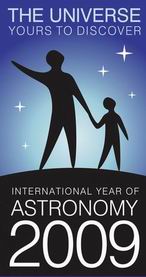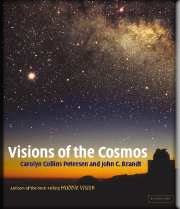 |
 The SpaceWriter's Ramblings |
 |
||
|
|
|
|
||
|
Anything and everything about science, especially astronomy and the cosmos. NOTE: This blog has migrated to a new address. Please update your favorites link accordingly.Visit my web site at Posting times are Powered by
|
8.24.2007 The Aurigids and YouThere's another meteor shower coming up in a week, and if you didn't get enough of them with the Perseids, you should check this one out. It's called the Aurigids, and it's supposed to be a flurry of bright and oddly colored meteors that seem to come from the direction of the constellation Auriga.
There's quite a bit of interest in this year's shower, which is the debris from Comet Kiess (C/1911 N1), because it's a rare one. Comet Kiess has only visited this end of the solar system twice in the past couple of thousand years, and so Earth rarely encounters its debris tail. This year we'll plow right through that trail on September 1. And if we're lucky, there could (emphasis on the "could") be a nice meteor shower, with perhaps a hundred meteors per hour or more, if the debris stream is thick. Or, if the debris stream is thin, the shower could be a bust. The catch here is that the peak of the shower will be best seen by people living in the Rocky Mountains and further west. Earth will be smack in the middle of this stream at 11:36 UT (that's 4:30 AM PDT). That's the peak time; the shower (if there is one) begins well before that.(See here and here for more information.) If you are planning to watch for Aurigids, there's a unique project brewing that you might want to be involved with: the Aurigid Laptop Meteor Observation Project. Essentially, it's another distributed computing project that will take observation info sent in by people in the observing range of the shower and turn it into a three-dimensional map of the debris stream from Comet Kiess. If you've got the time, you're in the right place, and want to make a contribution to solar system science, here's your chance. Labels: astronomy, Aurigids, computers, meteor showers, meteors posted by CCP on 8/24/2007 01:33:00 PM | *8.09.2007 August Pleasures: The Perseids A Perseid meteor flashing across the constellation Andromeda on August 12, 1997. By Rick Scott and Joe Orman, courtesy Sky & Telescope.comOne of the nice things about August stargazing is the Perseid meteor shower. It occurs when Earth's orbit takes our planet through the orbit of Comet Swift-Tuttle. The meteors are simply Grape Nuts cereal-sized nuggets of debris shed by the comet. The appear to be coming from the direction of the constellation Perseus. As they travel, they collide with our atmosphere and burn up on the way, leaving behind brilliant (but brief) trails of light as they go. The folks at Sky and Telescope have put together a nice little video cartoon of meteors flashing from the radiant (the area of the sky where the meteors appear to come from) during the upcoming shower. Check it out here. The meteor shower peaks on Sunday night (the 12th), with the numbers of meteors increasing after midnight into Monday morning. The good news is (weather permitting), the skies should be pretty dark, since the Moon won't be interfering with the view. So, check it out. A nice August night, a clear sky, and some meteors. What's not to like? Labels: meteors, Perseid meteor shower, sky and telescope posted by CCP on 8/09/2007 03:26:00 PM | * |

Earth Hour! Do it for the Planet!
Blog RollPlanetarium-relatedLoch Ness ProductionsPurveyors of fine planetarium shows, music, and services. INTENSELY Good Space Music from a master in the genre! My cool astronomy cause: ScienceThe sites below belong to space and astronomy enthusiasts. I make every effort to check them and make sure they are still appropriate. However, I am not responsible for their content, nor do I endorse any of it by simply linking to them. As with all Web surfing, please exercise caution. Adot's Notblog A fellow traveler blogger and astronomy enthusiast! Astronomy Blog An astronomy blog pondering the big questions Astronomy Cast Astronomy Podcasting from Pamela Gay BadAstronomy.com Bad astronomy discussed and debunked along with fun stuff about really good astronomy! Chris Lintott's Universe Musings from an Oxford Astronomer. Cosmic Variance Random Samplings from a Universe of Ideas. Dave P's Astronomy blog Observational Astronomy and other TidBits European Southern Observatory Fine Ground-based astronomy images. Gemini Observatory Fine astronomy in infrared and visible wavelengths. Griffith Observatory's page. I wrote their exhibits! Observing The Sky Nightly Observation Reports from dedicated skygazers. The Official String Theory Web Site. Time to feed your mind! Pharyngula Evolution, development, and random biological ejaculations from a godless liberal. Cast off your blinders and come on in! Science Made Cool A compendium of discoveries, inventions and commentary. Slacker Astronomy Astronomy with a Slacker Twist. Space Telescope Science Institute The best from Hubble Space Telescope The Eternal Golden Braid Astronomy, Space Science, and Science Fiction Commentary. The Inoculated Mind Bills Itself as a weekly science mindcast. Thought-provoking, honest. Truth. UniqueThe Hairy Museum of Natural History
|





